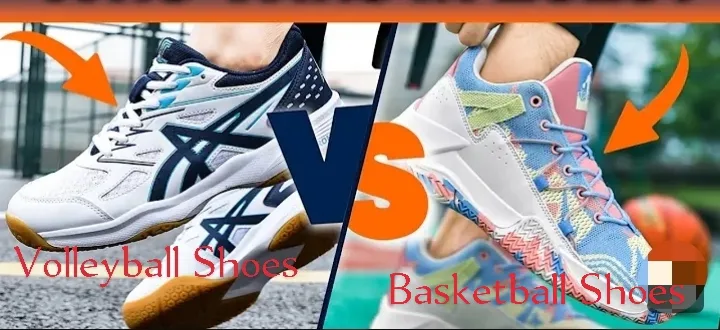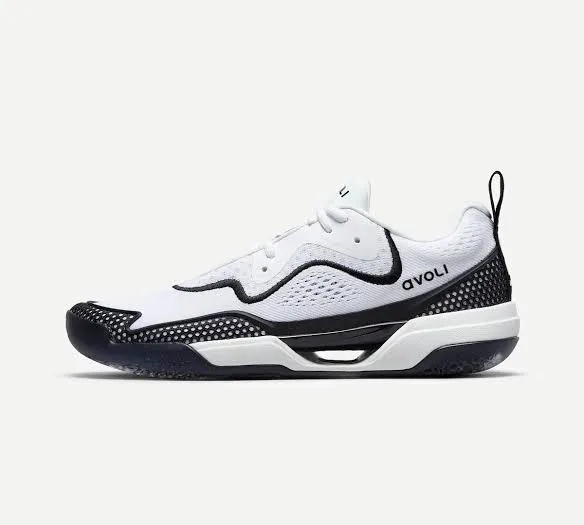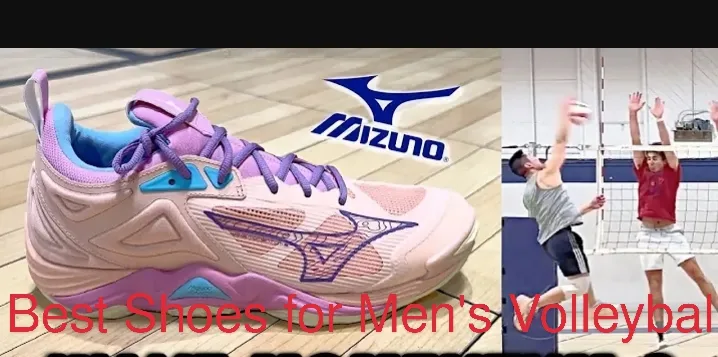What is the Difference Between Volleyball Shoes and Basketball Shoes? When it comes to playing sports at your best, having the right shoes can make all the difference. But what is the difference between volleyball shoes and basketball shoes? Although they may look similar at first glance, these shoes are uniquely designed to meet the specific demands of each sport. In this article, we’ll explore these differences and help you understand why it’s important to choose the right footwear for your game.
Importance of Choosing the Right Athletic Shoes
Your shoes are more than just a piece of gear—they are a crucial part of your performance. Whether you’re spiking the ball on a volleyball court or making a fast break in basketball, the right shoes can enhance your agility, stability, and even protect you from injury. Both volleyball and basketball place intense demands on your feet, but in different ways. That’s why it’s essential to have shoes specifically designed for each sport.
Key Features of Volleyball Shoes
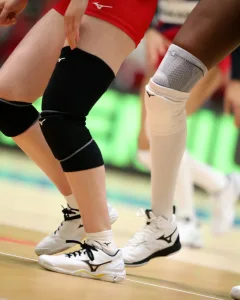
Volleyball shoes are crafted to meet the fast-paced and high-impact nature of the sport. One of the standout features is their lightweight design. These shoes often use durable yet light materials like foam rubber for the inner lining, which helps keep the foot securely in place without sacrificing comfort.
The soles of volleyball shoes are typically made of rubber or carbon rubber, chosen for their flexibility and ability to grip the court without being too sticky. This is crucial for quick lateral movements and jumping.
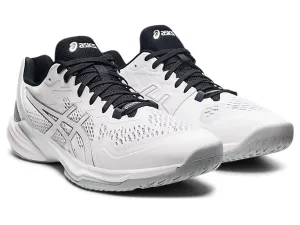
Cushioning in volleyball shoes is another critical feature. The heel often contains air dampers or gel inserts that absorb shock, reducing stress on your ankles and knees. This design helps athletes remain comfortable during long matches, which can last up to three hours. Moreover, the shoes have effective moisture-wicking properties, keeping your feet dry and cool throughout the game.
See Also:
- How Long do Volleyball Shoes Last
- 5 Best Volleyball Shoes for Setters
- Volleyball Shoes with Ankle Support: Expert Reviewed
- 5 Best Volleyball Shoes for Setters
Key Features of Basketball Shoes
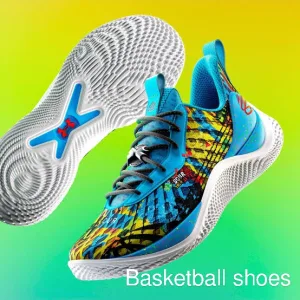
Basketball shoes, on the other hand, are built to support the sport’s combination of speed, power, and contact. These shoes are usually heavier and provide more overall support. The soles are designed with a multi-part structure: the back part has shock absorbers for landing, the middle part is firm for stability, and the front part is softer to facilitate quick sprints.
One key aspect that sets basketball shoes apart is their wider sole, which provides better traction for sudden stops and sharp turns. This is especially important in basketball, where quick direction changes are frequent. The shoes are also designed with thicker side inserts to protect the feet during physical contact with other players.
The upper part of basketball shoes is often high-top, providing additional ankle support. This design minimizes the risk of sprains during jumps and abrupt movements. Made from a combination of leather and synthetic mesh, these shoes offer both durability and flexibility, with the mesh allowing for ventilation to keep feet cool.
See Also: 10 Best Basketball Shoes for Jumping
What is the Difference Between Volleyball Shoes and Basketball Shoes?
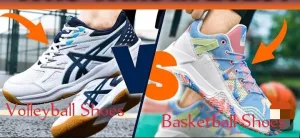
Difference Between Volleyball Shoes and Basketball Shoes
| Feature | Volleyball Shoes | Basketball Shoes |
| Weight | Lightweight for agility and quick movement | Heavier for stability and support |
| Cushioning | Cushioned throughout the sole, especially in the heel area | Cushioned mainly in the heel with a firm middle and softer front |
| Sole Material | Rubber or carbon rubber, flexible and non-marking | Combination of hard and soft materials, wider for better traction |
| Ankle Support | Mid-top or sometimes high-top for moderate ankle support | High-top design for maximum ankle support |
| Traction | Designed for grip on indoor courts, enhancing lateral movements | Wider sole for better braking and traction on quick stops |
| Material | Foam rubber interior, breathable and moisture-wicking | Combination of leather and synthetic mesh for durability and flexibility |
| Shoe Height | Mid to high, but generally lighter and more flexible | Generally higher and more rigid to protect against contact and sudden movements |
| Flexibility | High flexibility to support quick lateral movements and jumps | Less flexible, designed for support during fast directional changes |
| Durability | Durable but focused on lightweight and breathability | Built to last longer, especially in high-impact areas |
While both types of shoes are designed for high-impact sports, the differences lie in their specific features tailored to each game. The most noticeable difference between volleyball shoes and basketball shoes is in the cushioning and sole design. Volleyball shoes are cushioned throughout the sole, making them ideal for continuous jumping, whereas basketball shoes have a varied sole structure to support running and jumping combined with sudden stops.
Another key difference is ankle support. Basketball shoes generally offer higher ankle support, which is necessary due to the frequent changes in direction and physical contact in the game. Volleyball shoes, while sometimes mid-top, focus more on lightweight and flexibility to allow for quick lateral movements and jumps.
In terms of weight, volleyball shoes are lighter, allowing for easier movement across the court, while basketball shoes are built heavier for added stability. The traction of the shoes also differs, with volleyball shoes designed to grip the court for precise movements and basketball shoes offering a wider base for solid stops.
Check out: Basketball Shoes for Volleyball: 2024 Best Basketball Shoes for Volleyball
How to Choose the Right Shoe for Your Sport
Choosing the right shoe comes down to understanding your needs on the court. If you’re a volleyball player, you’ll need shoes that offer excellent cushioning, are lightweight, and provide good traction for lateral movements. For basketball players, the emphasis should be on support, especially around the ankles, along with a sole that allows for quick direction changes and stable stops.
It’s also important to try on different models and see which feels most comfortable. Remember, the right shoe should feel like an extension of your foot—secure, comfortable, and tailored to the specific movements of your sport.
Conclusion
In summary, what is the difference between volleyball shoes and basketball shoes? The difference lies in their design, structure, and purpose. Volleyball shoes are built for agility and continuous jumping, while basketball shoes are designed for stability, support, and quick direction changes. Investing in the right shoe not only enhances your performance but also reduces the risk of injury, helping you to enjoy the game to its fullest.
FAQs
Can you wear basketball shoes for volleyball?
Yes, you can wear basketball shoes for volleyball, but it’s not recommended for optimal performance. Basketball shoes are heavier and less flexible, which can hinder your movement on the volleyball court. Volleyball shoes are specifically designed to support quick lateral movements and jumps, making them a better choice.
Why are volleyball shoes lighter than basketball shoes?
Volleyball shoes are lighter because the sport requires quick, agile movements and continuous jumping. The lightweight design helps players move swiftly across the court without being weighed down, enhancing their performance. In contrast, basketball shoes are heavier to provide stability and support for the fast-paced, contact-heavy nature of the sport.
What are the consequences of using the wrong shoes for a sport?
Using the wrong shoes for a sport can lead to decreased performance and an increased risk of injury. For example, wearing basketball shoes for volleyball might restrict your movement, making it harder to jump and move laterally. On the other hand, using volleyball shoes for basketball might not provide enough ankle support, increasing the risk of sprains. It’s crucial to wear shoes that are specifically designed for your sport to ensure safety and optimal performance.

